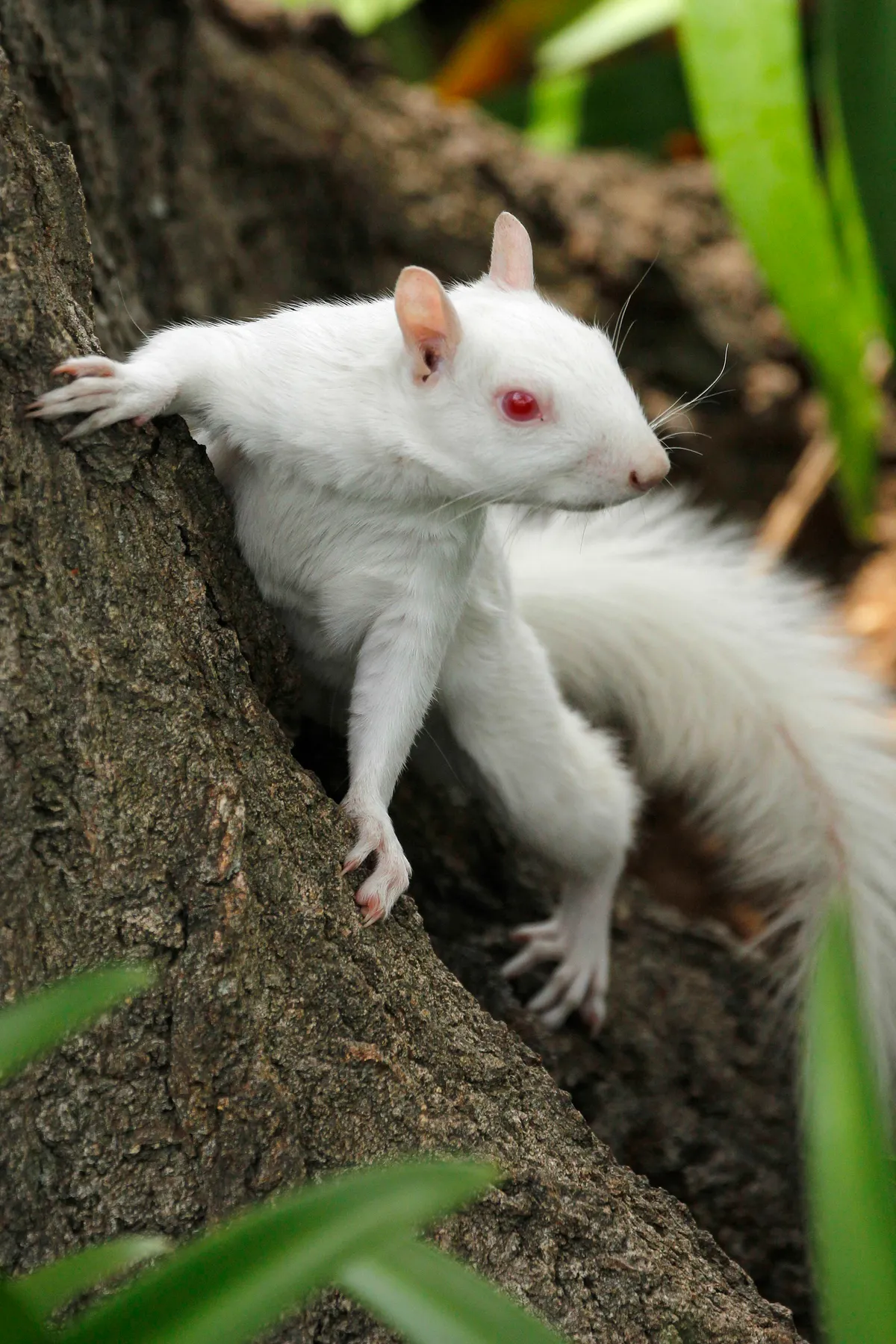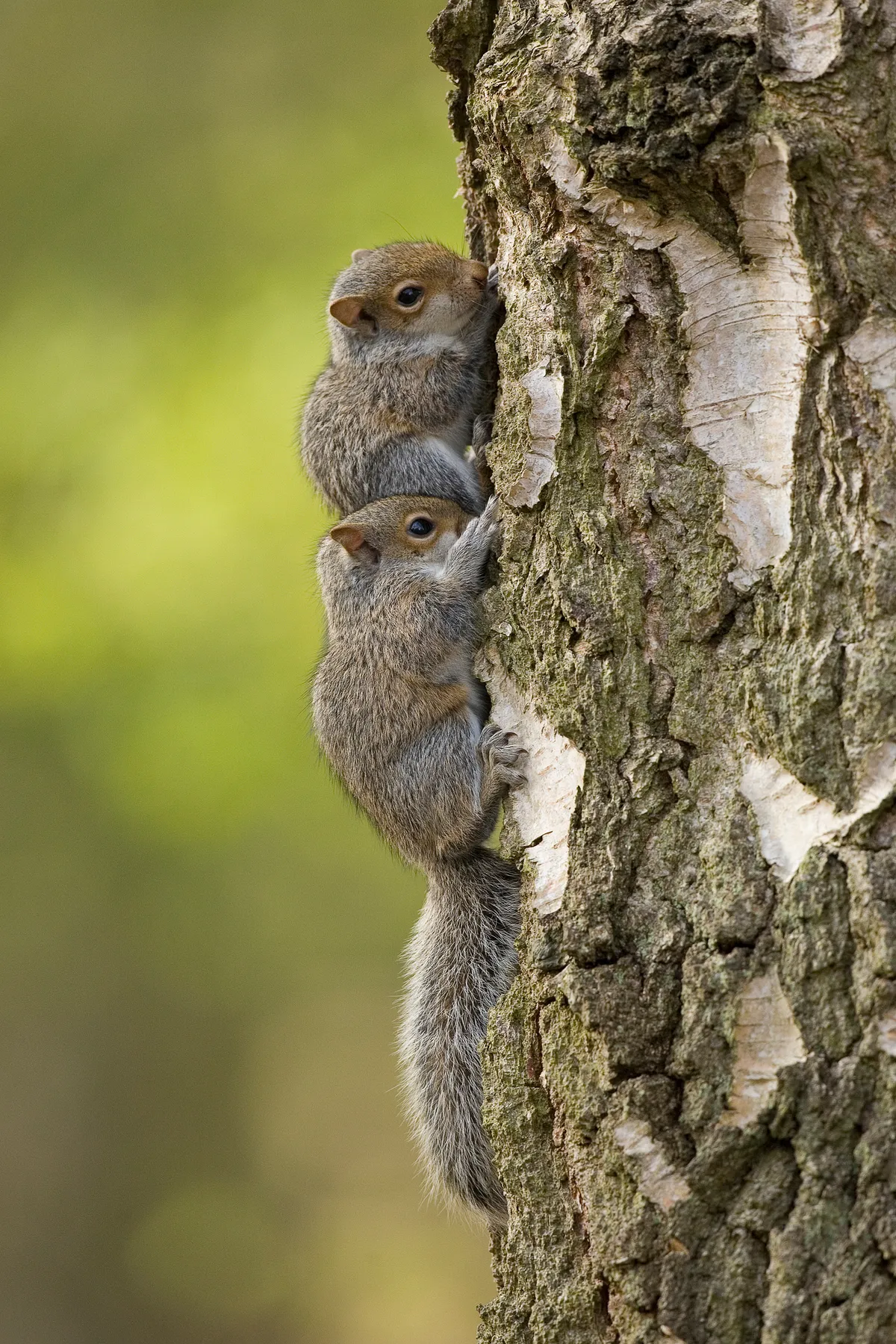Grey squirrels are a common sight all over the UK. Here Stephen Harris explains what to look out for and how to understand their behaviour.
How to identify a grey squirrel
Grey squirrels, as their name implies, are predominantly grey. There is invariably some chestnut-brown on the back, often extensive and spreading onto the flanks and limbs, which can lead to erroneous reports of red squirrels. We explain the differences between red and grey squirrels
Sexes are the same size, but in late winter the large scrotum of the males is conspicuous, and the nipples of breeding females are easily seen when they are sitting up.
Melanistic (pure black) grey squirrels were introduced to Woburn. They are found in the safari park and in Bedfordshire, Buckinghamshire, Hertfordshire and Cambridgeshire.
Albino grey squirrels can be seen in Kent, Surrey and Sussex. Erythristic (reddish) forms with red-brown backs are sometimes found in the South-east.

Grey squirrel diet
Food caches are relocated in winter and early spring by scent, though the area of the cache is remembered. These food stores comprise the seeds and fruit of deciduous trees.
Watch squirrels with their noses to the ground – once they’ve found what they’re looking for, they will start digging with their forefeet.
As spring approaches, grey squirrels also strip bark from beech and sycamore trees. In summer, flowers and buds form about 60 per cent of diet.
Grey squirrels spend more time feeding on the ground than reds, and are most terrestrial in the late winter months.
Do grey squirrels eat birds' eggs or baby birds?
Not only are grey squirrels widely believed to eat bird nestlings and eggs, they’re also blamed for occupying valuable tree cavities that could otherwise be used by birds for nesting.
Until recently there was little evidence either way, but a study conducted by the Centre for Ecology & Hydrology has found that both effects are negligible.
While the squirrels do eat eggs and chicks on occasion, only 0.5% of nests are affected. Similarly, they take over only a small fraction of potential nest sites. Neither effect is likely to have much impact on native bird populations overall.
Stuart Blackman
Grey squirrel reproduction
If there is a good food supply, grey squirrels produce 2 litters of 2-4 young between February and July.
Young squirrels start to emerge from the nest and eat solid food from 7 weeks. It is rare to see young squirrels with their mothers, but they will stay in the same area at least until autumn. Some will nest with their mothers over winter.
Young squirrels are silver in colour and moult to their adult coat when 3 to 4 months old.

Why do grey squirrels chase each other?
Fights between dominants and subordinates normally occur in the breeding and dispersal seasons, and involve chases and wrestling.
Males are attracted to the scent of oestrous females. Several males will frequently follow one female and often end up chasing her. A chase between two rivals is likely to be short – once one has fled, it has admitted defeat. A male chasing a female does not give up so easily.
How do grey squirrels communicate with each other?
11 different calls have been described. Scolding noises are often made by squirrels on branches, accompanied by tail flicking directed at another squirrel or a ground predator.
How long do grey squirrels live?
Grey squirrels live up to nine years in the wild. The older the animal, the more it weighs.